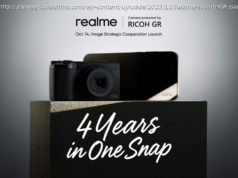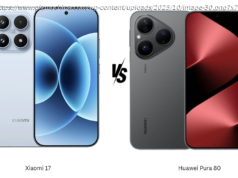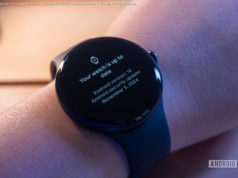We dropped a brand-new iPhone XR on the sidewalk to find out just how tough this phone is compared to the more expensive iPhone XS.
The iPhone XS proved it can take a beating in our drop test, but is the cheaper iPhone XR just as strong?
At first glance, the iPhone XR shares a lot of the same features as its higher-end sibling: edge to edge display, glass on either side and a metal bumper, but it is built slightly differently. For starters, its larger 6.1-inch screen has more breakable surface area than the 5.8-inch display of the iPhone XS. It’s also enclosed in an aluminum frame instead of the stronger stainless steel that wraps around the glass of the XS and the XS Max.
The glass itself is different, too. The screen is covered in the same glass as the XS and XS Max that Apple says is the «most durable glass ever in a smartphone,» but the back is different. It’s stronger than last year’s iPhone X — which broke at the first drop from hip height — but not as sturdy as the one on the iPhone XS. And it has a single camera on the back with a slightly more pronounced bump.
To find out if and how this would affect the durability of the phone, we took our brand-new, bright yellow iPhone XR to the sidewalk for some real-world (non scientific) drop tests, just like its older siblings before it.
I started off with a drop from pocket height, or about 3 feet (0.9 meter), the height at which a lot of accidents happen. The same drop that broke last year’s iPhone X.
I dropped the iPhone XR screen-side down to test out the tougher glass first. Unfortunately it barely grazed the screen because by the time it landed, it had already flipped over and the back broke the fall. The right side hit first, then bounced on the camera side and the flipped over in the air for its final landing: screen side down.
From where I was standing it looked like he back has survived without a scratch, but once I picked it up I noticed the sapphire glass on the camera had a «C» shaped crack running from top to bottom with a white ding at the source. The aluminum frame also had some visible scrapes on the side that scraped off the gold coating exposing the silver underneath. The screen on the other hand didn’t look any worse for wear with a few speckles around the very edge of the screen that scraped off when I ran my fingers on it.
I took a few test shots with the camera and noticed that most of the shots looked pretty good despite the crack. Where the crack did become apparent while recording video if the light hit it at the right angle.
With the screen and the back glass still intact I decided to continue with our drop test.
Because the screen didn’t hit the floor first on the last drop, I decided to drop it screen side down again from the same height of 3 feet (0.9 meter). This time holding it with both hands to better control the drop.
The top part of the screen broke the fall, then the right edge and bottom caught up making the phone bounce back up and turn 180 degrees in the air until it landed again screen side down with the top right corner touching the floor first.
Based on how much force was put on the screen on this fall I expected there to be some damage. But when I turned it over, the screen was fine. It had a few white lines around the edges of the glass, but most of the turned out to be cement particles and rubbed right of. There were still a few tiny dents in the glass on the top of the screen, but nothing too noticeable.
To raise the stakes, I took our iPhone XR up to eye level, or 5 feet (1.5 meters). This is roughly the height at which it would fall from your hands if you’re taking a picture, another common situation.
I started off with the phone on landscape with the screen facing me, the way you would naturally hold your phone when taking a picture, and then let it fall.
The back top corner of the frame above the camera broke the fall, then it bounced and hit the other edge of the frame, went airborne again and this time landed with the backside facing the floor.
There was no visible damage on the screen, but the scrapes on the aluminum frame had multiplied, the worst were on the corner above the camera where the phone hit first. The back still looked good, but a closer look revealed a tiny fracture on the bottom left hand corner of the glass. Aside from the camera and the banged up frame, this phone was still in fighting shape.
For the last test, I decided to put the front glass through the ringer and drop it screen side down from eye level (5 feet).
I knew it was bad the moment the phone hit the floor. It let out a loud thump and even kicked up a light dust cloud as it landed nearly perfectly flat on its screen.
And sure enough, when I turned it over I noticed a cluster of spider webs stemming from the earpiece outward. I could even feel the tiny shards of glass starting to peel off ass i ran my fingers over the top of the phone.
The back glass was still intact, but that marked the end of our drop test.
It took four bad drops on rough sidewalk to finally crack the screen of our iPhone XR. Because of the nature of our tests, it’s hard to tell whether or not the iPhone XS (which survived that fourth and final drop) is more durable than the XR. I suspect that even the iPhone XS would’ve cracked after that face-plant at the end. What is clear to me is that Apple has made the glass on its new phones stronger than its predecessors. Both the iPhone XR and the iPhone XS held up longer than last year’s iPhones 8 and X, and even some of its competitors.
Even if the iPhone XS has a slight advantage when it comes to surviving drops, the iPhone XR will cost you at least $250 dollars less. It’s also cheaper to fix. Replacing the screen without AppleCare+ will set you back $199 compared to the $279 of the iPhones XS, and the $329 it costs to repair the 6.5-inch screen on the XS Max.






